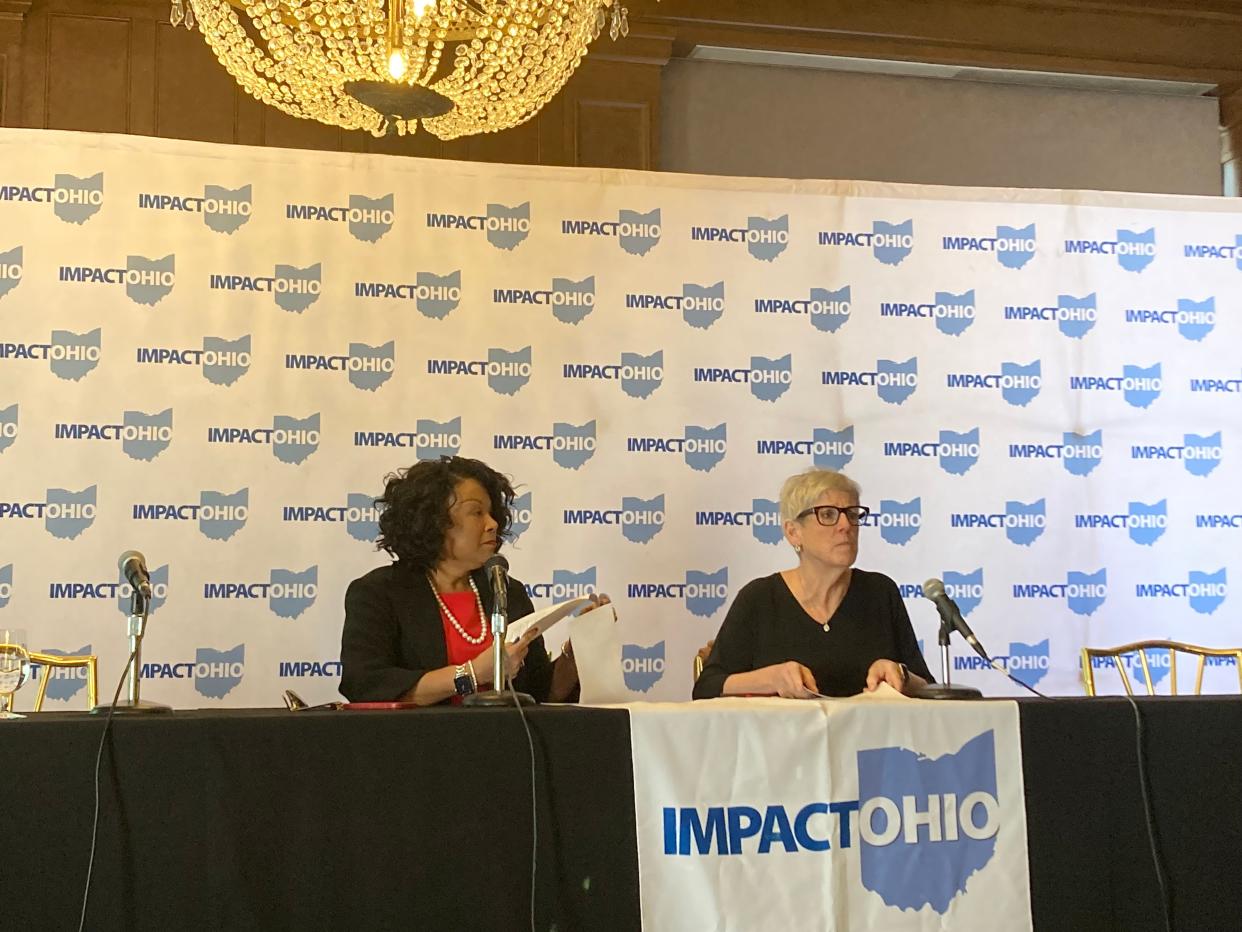Why did Ohio redistricting fail? Self-serving politicians, former justices say

- Oops!Something went wrong.Please try again later.
- Oops!Something went wrong.Please try again later.
Two former Ohio Supreme Court justices say voter-approved changes to curb partisan gerrymandering failed because of one simple reason: self-serving politicians.
Former Ohio Supreme Court Chief Justice Maureen O'Connor, a Republican, and former Justice Yvette McGee Brown, a Democrat, instead pitched their proposal to replace elected officials with a 15-member citizen commission to draw congressional and statehouse districts. They plan to put the issue on the November ballot.
"It's about allowing citizens to draw fair lines that keep their communities intact and not about politicians perpetrating their own electoral survival," McGee Brown told the Ohio Chamber of Commerce's Impact Ohio conference Thursday. "And just so you're clear, both sides have done it."
Ohio Senate president Matt Huffman says current system works
At the event, Senate President Matt Huffman, R-Lima, defended Ohio's current rules for drawing maps, which he helped craft. Using those districts, Republicans control 67% of congressional seats, 79% of state Senate seats and 68% of state House seats. In comparison, former President Donald Trump won Ohio with 53% of the vote in 2020 and Gov. Mike DeWine won reelection with 62% of the vote in 2022.
The Ohio Supreme Court, then under O'Connor's leadership, repeatedly rejected maps approved by Huffman and others as unconstitutional and unfairly favoring Republicans. After lengthy litigation, the seven-member Ohio Redistricting Commission approved statehouse maps with unanimous, bipartisan support.
At the time, the commission's two Democrats said the maps were the best they could do, not an endorsement of the redistricting process. But Huffman touted the compromise on Thursday.
"Is there any place in the United States where it has this type of volatile political issue where the parties came together and unanimously, in a bipartisan way, voted in favor of something like this? It simply doesn't happen," Huffman said.
Huffman also criticized the proposed reforms as overly complicated. The ballot measure would create a panel of five Democrats, five Republicans and five independents with no recent political connections. Retired judges would pick a pool of possible commission members to represent different parts of Ohio.
“I gotta follow my notes because this is really tough," Huffman said of the many steps.
More: Ohio redistricting: How would the proposal to ditch politicians for citizens work?
But O'Connor said the steps are needed to prevent the legal wiggle room that Huffman and others exploited during the mapmaking process. "They say complex. I say prescribed and intentionally detailed. That doesn't mean it's confusing."
Huffman also contended that the ballot issue would make it easier to divide cities, villages and other municipalities, which almost always must be kept whole under the current rules. This would put Black lawmakers at a disadvantage, he said, pointing to a lawsuit in Michigan over that issue.
"While I appreciate the president's concern about African Americans," McGee Brown said. "We were very clear in the language to make sure that like communities are kept together, that there would be no cracking and packing." The proposed changes require mapmakers to "preserve communities of interest to the extent practicable."
McGee Brown was the first Black woman to serve on the Ohio Supreme Court.
The ballot campaign, Citizens Not Politicians, has until July 3 to submit at least 413,000 valid signatures to make the November election. The campaign plans to submit about 700,000 signatures to account for some being rejected for various flaws.
Jessie Balmert is a reporter for the USA TODAY Network Ohio Bureau, which serves the Columbus Dispatch, Cincinnati Enquirer, Akron Beacon Journal and 18 other affiliated news organizations across Ohio
This article originally appeared on Cincinnati Enquirer: Politicians to blame for Ohio redistricting failures, ex-justices say

